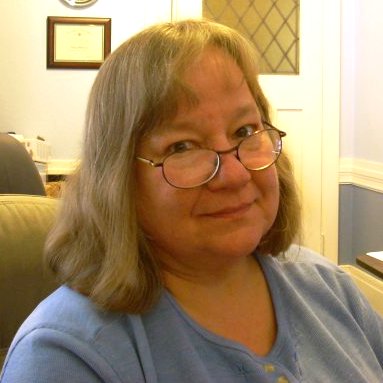An Interview with Nina Butorac
Q. What motivated you to write this book?
A. I have been teaching classes on the Sacramental Imagination for many years at my parish in Seattle. And
while I have used other literary works in the classes, I settled on these major authors and these works in
order to bring out the sacramental quality of the Catholic faith. So many believers are yearning for a deeper
understanding of their faith. There is a tremendous need for challenging coursework that takes the average
Catholic beyond catechesis and launches them deeper into the heart of mystery.
Q. What is that sacramental quality?
A. Catholics imagine differently. The aesthetic imagination of the artist raised in the Catholic faith often
differs from the imagination of those who are raised in the Protestant faiths. The Protestant emphasis on
Holy Scripture, and the Catholic emphasis on the sacraments and sacred imagery, impacts the way each views
the world. This world-view is at the heart of the artist's expression. I wanted to find Catholic writers who
captured this imagining, even if they were only marginal Catholics or non-practicing, as well as the devout.
Q. What writers do you examine?
A. The most conscientiously Catholic writer is Flannery O'Connor, who was a student of St. Thomas and
his aesthetic - that creation mirrors God and that the artist is concerned with the good that is made. But I also
bring Albert Camus into the fold. Though he was agnostic, his upbringing was Catholic, and he has a very
clear understanding of the sacraments of the Catholic Church. The poems of Gerard Manley Hopkins and
Thomas Merton are filled with this sacred imagery. Graham Greene gives us an essential glimpse at the role
of the ordained priesthood and the vocation of love. Annie Dillard's work is powerfully sacramental, in
language and in theme. I finish with a short essay by Richard Rodriguez who, like Flannery O'Connor, is
clearly an educated Catholic expressing himself - quite conscientiously - in sacramental language.
Q. What is sacramental language?
A. It is like symbolic poetry, but it is more. The sacraments are symbols, but they are more. The sacraments
of the church not only signify the hidden grace of God, they make that grace present. Sacramental language
not only points to an underlying grace at work in the world, it is in touch with that mystery. The sacraments
of the church give grace, and we are assured of this gift, but grace abounds and it underlies reality. Our task
is to look for it, recognize it, consent to it, and receive it.
Q. What do you mean when you say grace underlies reality?
A. I mean that grace is everywhere. This isn't the pantheistic notion that all things are God, it is the
sacramental notion that God is in all things. This is a Catholic viewpoint, but it is lost in a culture that is
heavily influenced by the Protestant idea that the world is corrupt and corrupting, and that we need to escape the muck of the world and achieve a spiritual transcendence. It isn't a question of which view is correct or
incorrect - at least not in literature - it is a question of which perspective the artist is using to direct their
work.
Q. Is this a theological book, or is it literary criticism?
A. It is a little of both. We need to understand the theology of the sacramental, Catholic view before we can
fully grasp the depth of its literature. Ours is a very corporeal faith. Catholics regard the human body as the
instrument through which our salvation is achieved. We are not redeemed by some spiritual absolution, but
by a bloody action in human history. God sanctified our humanity by becoming human, by taking on human
form in the person of Jesus Christ who redeemed us by his death on the cross. The Catholic literature we
look at in this book brings us back to the Incarnation and the cross, again and again, because they are the
central themes of our faith.
Q. Isn't this sacramental imagination already formed by a Catholic education?
A. Sometimes, but that has not been my experience with my students. For the most part, Catholics tend to
be very similar to their Protestant or secular neighbors in their appreciation of literature. This is fine, but it
is only part of the story. There has to be a continuation of catechesis after RCIA for those new to the faith,
and after the eighth grade for those who never fully understood the depth of the sacramental life that they
are emersed in as Catholics. I have been very surprised and pleased that some of the most staunch Catholics
in my class went away with a new appreciation for Albert Camus, the agnostic! I think that is a success story,
because it means that his sacramental language - and it is there in Camus - can span the distance between
belief and unbelief. It is that powerful.
 |
Nina Butorac is a Catholic writer and artist living in Seattle. As Outreach
Director for her parish, she has taught classes on the Sacramental
Imagination, Philosophy, Catholic Social Teaching, the Primacy of
Conscience, and other Catholic curricula. Now retired, Nina dedicates her
time to writing, painting, and advocacy for justice.
|
 Alyosha.com
Alyosha.com
 Nina Butorac
Nina Butorac